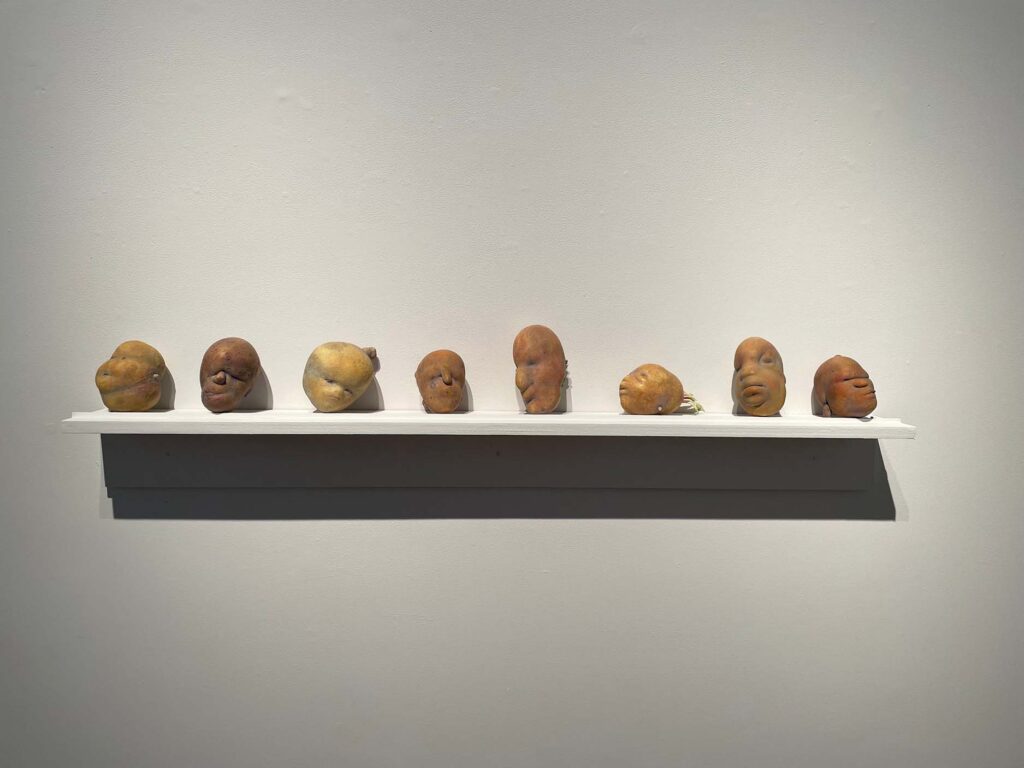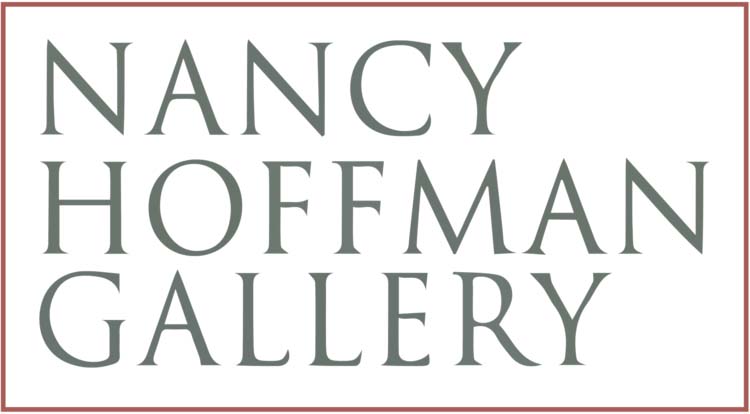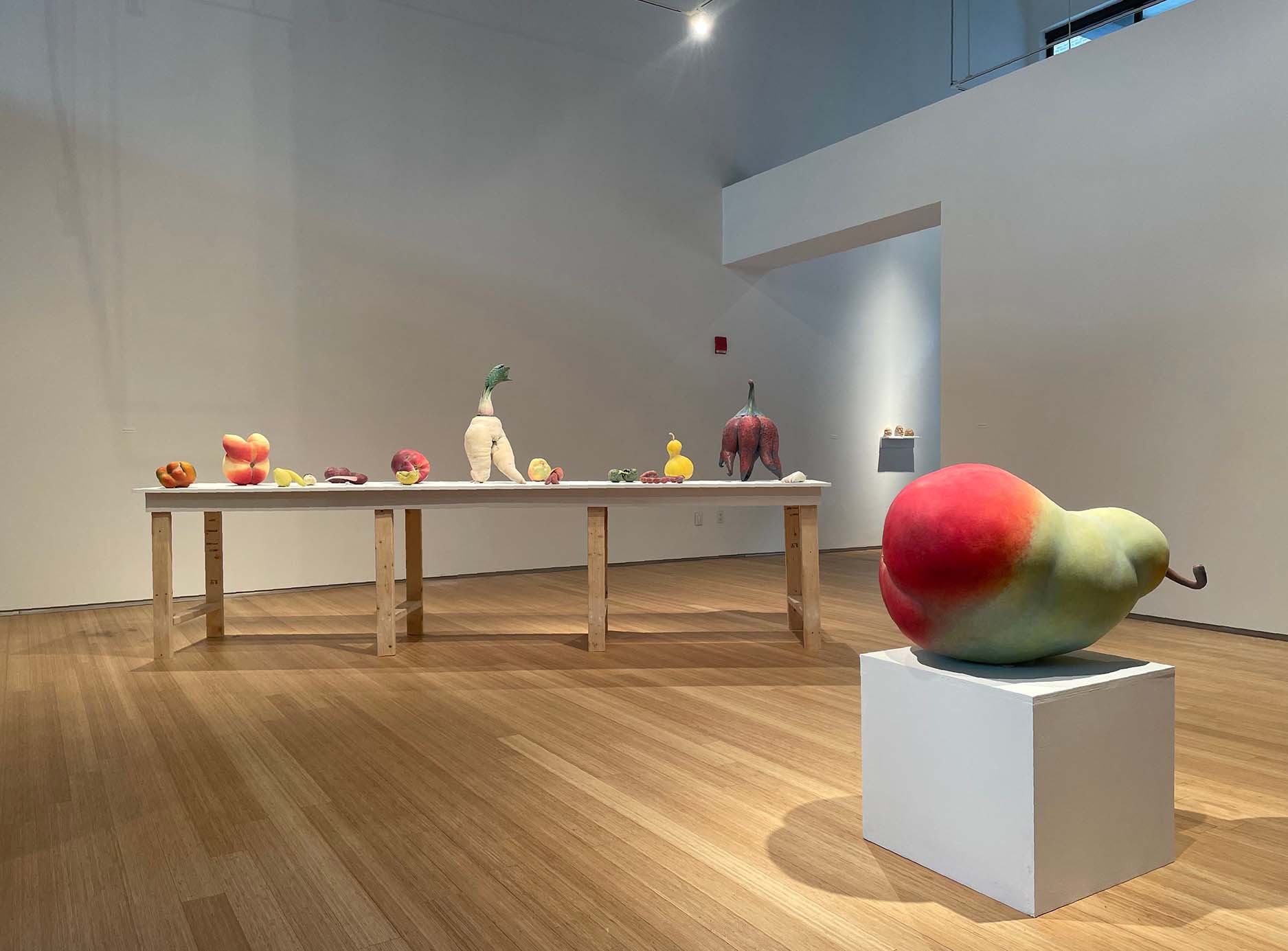
MoCA/NY’s writer Ilsy Jeon speaks with Judy Fox about her recent exhibition titled Harvest at the Nancy Hoffman Gallery in Chelsea, New York City, which is on view until the 21st of October. The show includes fifty terra-cotta sculptures that portray animated fruits and vegetables in various sizes, all evoking a sense of sensuality, vulnerability, and humor—a delicious and amusing feast to the eye.
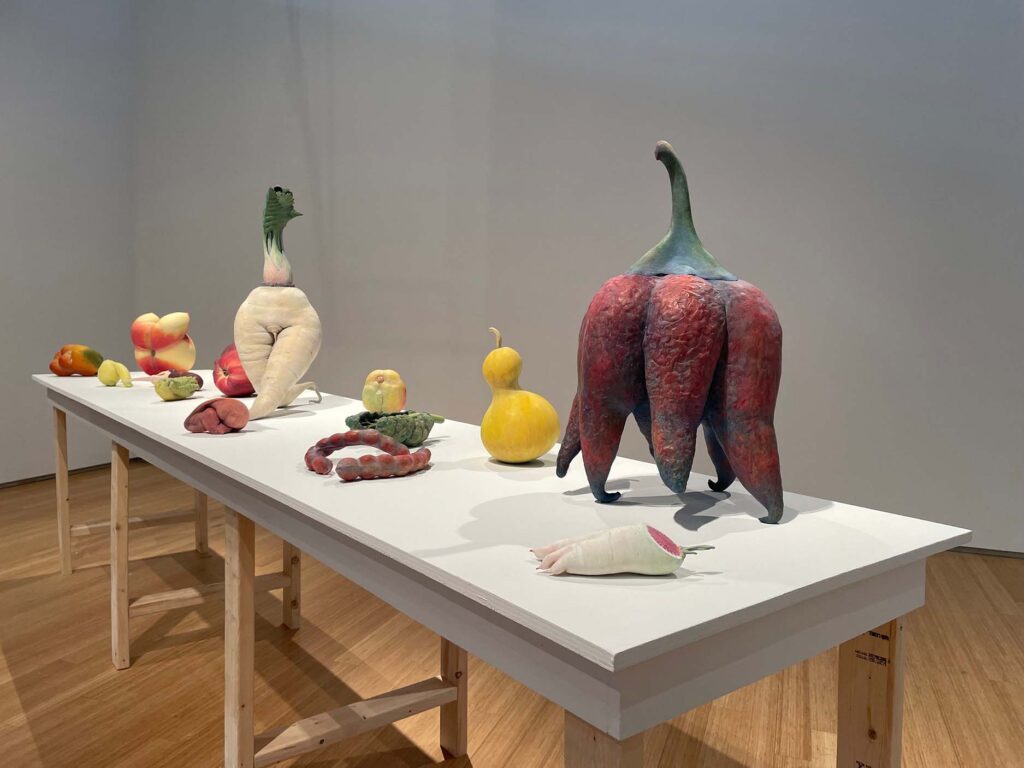
JUDY FOX: In my prior exhibition, Garden, I used plant forms as a way of exploring forms and imperatives like growth, differentiation, and reproduction that are common to all kinds of life. The plants were animated by structures analogous to what you see in animals. For example, there are functional parts like roots and branches, and then there are displays like leaves and flowers that tend to be more beautiful, in the way that faces and breasts may be more beautiful than bones and guts.
With Harvest, I was really continuing in that vein of using plant life as illustrative of all life. I honed in on the cultivated, showy parts of the plant. Those parts are bred to be appealing and tasty looking, so when something is off, it is more pointed. And I was looking for a way to express the tenuous mortality we were all feeling during COVID-19, the sense that even if we were OK, our bodies could go awry. I think that threat is something one starts to feel anyway with aging.
Plants, like us, are marred by deformed growth, scarring, disease, rot, desiccation, and damage. Specially bred cultivars may be especially delicate and vulnerable to those things. I wanted to point to this common vulnerability in a humorous way by using plants that remind us of our own body parts.
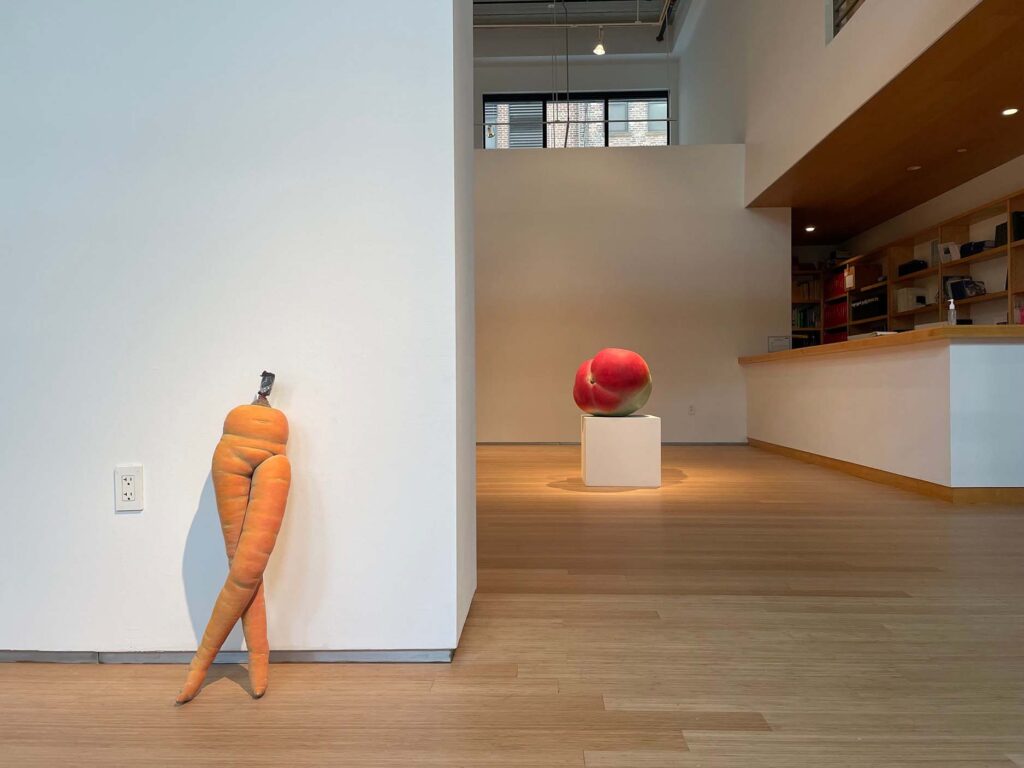


JUDY FOX: There is lots to say about environmental problems: about the many ways that we poison and deface our environment, as we try to exploit and cultivate nature to supply human life and lifestyle. But environmental science isn't my forum.
As an artist, my language is visual. I can only make broccoli that is a bit rotted, like tar-stained lungs. I can show a radish that looks butchered, a citrus that looks like it is praying, or a scarred, crouching eggplant.
I can only make people feel the truth about ourselves and how we consume and grow and grow awry.
JUDY FOX: Having dug deep into evolution, religion, and mythology, I felt a need for a simpler, perhaps more approachable presentation. Harvest avoids character and mythological references. The human body is not directly depicted. I feel like people can no longer handle the naked truth of what the flesh looks like in the kind of idiosyncratic detail that interests me.
However, I can pay close attention to fruit flesh and not have people look away and wonder if I am shaming someone. But the body is present in my work, of course. With plants, I have given myself more freedom to pursue the truth of mortal form.

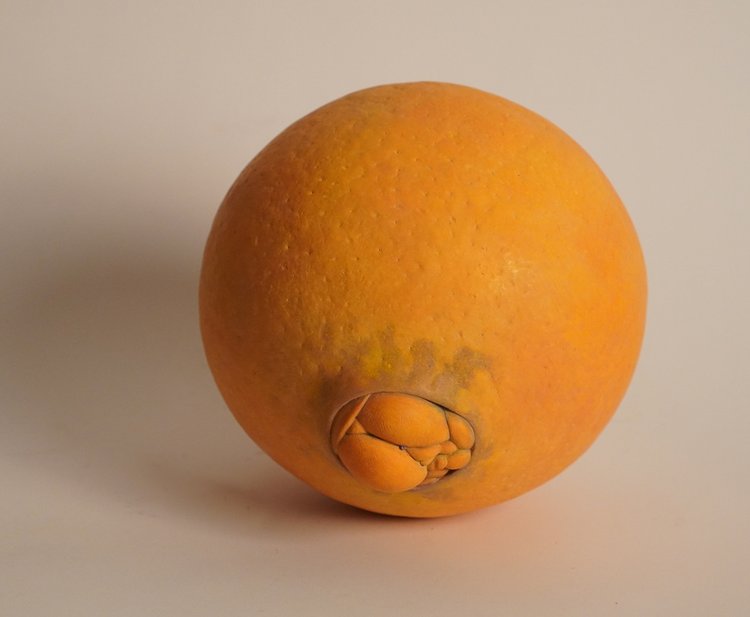



JUDY FOX: I learned to sculpt with clay on an armature, which is the best way to experiment with the form itself. And clay is the most direct vehicle for shaping form. So though I moved away from the armature and sculpture casting, continuing to work in clay was natural for me. I like to stick to a traditional medium as a way of having a defined language and historical discourse in my work.
My use of paint grew out of two convictions: that the abstracted modernist nude was played out, and that the academic figure was hopelessly sentimentalized and conventional. So I looked back to gothic polychrome sculptures that celebrated the way people really look. Back in the 1980's when I started, I was not aware of any other contemporary artists painting modeled figures.
My specific figurative subjects: well-known characters in well-known identifying poses, were chosen because their stories and their gestures had interesting readings by contemporary standards. Misinterpretation is almost unavoidable when translating across time and culture. It becomes part of new times and cultures. I was highlighting appropriation at a time when awareness of it was dim. Now that everyone is hyperaware of that issue, the reading of gestures in my older work has likely changed.
JUDY FOX: When sculpting the form, I very often had to pull back the figurative shapes that naturally inhabit my work. I studied photos of many examples of each kind of fruit to figure out its physical language (lumps, grooves, plumpness, texture) and I tried to stick to that. But it turns out it doesn't take much for people to see themselves in anything. I am very pleased to report that people seemed to enjoy and get this work on many levels - a pleasant surprise.
